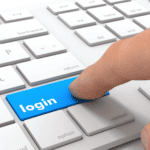What is Passwordless Authentication?
Credentials and passwords present a vulnerability to hackers that are often exploited. This is why they are often the biggest cause of data leaks and security breaches. According to Dataprot, 81% of security breaches are due to weak or stolen passwords.
Password attacks can come in the form of phishing, which Dataprot states are responsible for 90% of all enterprise security breaches, credential stuffing, or malware, but the threat remains the same. That is why many organizations have begun considering a transition to passwordless authentication.
How Does Passwordless Authentication Work?
Passwordless authentication logins blend security and convenience and are a major part of Zero Trust adoption. Users don’t need to manage complex secrets, and enterprises don’t need to worry about phishing hacks or password breaches.
In the past, using alternative authentication methods to retrieve passwords was stored locally, but obviously, those solutions provided convenience but are still vulnerable.
Today, passwordless authentication relies on a cryptographic mechanism to bind user identity with a device that has been used for authentication to ensure protection while providing convenience.
The two main methods are :
- Using FIDO 2.0 protocol (like WebauthN, passkey, and HYPR)
- Using X509 Certificates combined with device posture evaluation (like Okta, BeyondIdentity, and others)
In combination with biometric authentication that is natively supported, these methods eliminate the need of using any other factor to authenticate the user and resist any phishing attack or any other malicious attempt.
Each passwordless authentication method has its advantages and disadvantages, considering the application types, IDP being used, devices and their posture, and many other considerations.
Step One: Begin with a Passwordless Desktop
Before you can start thinking about making your entire system rely on a passwordless solution, you will need to focus on the desktop. The desktop computer is typically what the majority of your enterprise will be interacting with primarily, so if you focus on the system before the desktop, you could be making a crucial security mistake.
The first step you will need to take is to deploy a passwordless Multi-Factor Authentication (MFA) solution for desktop devices. This necessary step on the road to becoming an Okta passwordless enterprise will reduce your risk and remove an important vulnerability from your business.
Step Two: Become a Single Sign-On Enterprise
Once you’ve used a passwordless MFA solution for desktops, it is time to focus on system changes. You will need to connect that passwordless MFA from your desktop to your Single Sign On or SSO provider. For many, the SSO provider will be Okta, a leader in the SSO and MFA space.
Joining your passwordless MFA with Okta’s SSO features will help create a seamless enterprise passwordless solution. It will help enterprises enable a frictionless login experience where employees can go from a desktop login to the SSO, making accessing resources easier and more secure.
Step Three: Eliminate Vulnerable MFA Methods
One of the crucial benefits of Okta passwordless authentication is that it allows enterprises to remove authentication methods that can pose security threats. One method that should be eliminated is the One Time Password or OTP. This is a form of MFA where systems send a single-use password to an email or phone. Unfortunately, hackers have now gained the ability to duplicate OTP successfully through sophisticated phishing schemes, and MFA is not the catch-all that it once was. It is almost impossible to tell the difference between a proxy multi-factor duplicate and the real thing, which is why many enterprises are reducing their usage of OTPs.
Transitioning your application to a passwordless SSO system will reduce reliance on OTP authentication. These are time vacuums that are not as secure as many believe, so cutting down on their usage will yield positive results. A HYPR passwordless solution will help businesses eliminate OTPs.
Step Four: Focus on Employee Education
Once you’ve established the Okta passwordless infrastructure, you will need to begin focusing on developing your employees’ understanding of Okta passwordless authentication. Research from Stanford has shown that 88% of all data breaches are caused by human error, so education is a pivotal step in the process.
While an Okta passwordless solution will eliminate one of the key elements of human error, which is weak passwords and vulnerability to phishing, it is still important that your employees understand best practices. Providing information on how passwordless authentication works and what pitfalls to avoid will ensure a seamless transition to a passwordless SSO infrastructure.
Step Five: Continue to Push System Towards Full Passwordless
When a company has migrated most of its system to a passwordless sign-on, there will still be some tweaks they need to make along the way. Focusing on addressing any legacy applications that require passwords will be an important late-stage step. There will be older applications that might be hard to implement Okta passwordless authentication. You will have a few options to make this transition possible.
Having some applications that require passwords and some that don’t can result in bottlenecks and a confusing user experience. Solutions that many companies implement is adding legacy applications to their Okta SSO or integrating passwordless authentication with the applications directly if this is an option.
Step Six: Enjoy the Benefits of Being an Okta Passwordless Enterprise
Once you have undergone these first five steps, you can start to enjoy the benefits of the Okta passwordless experience. The user experience with Okta passwordless authentication is dramatically more efficient. Employees don’t need to remember ten different passwords for each application, and there are fewer bottlenecks caused by forgotten passwords. Simultaneously, it drastically improves your cybersecurity by reducing the risk of phishing attacks and data breaches stemming from weak or stolen credentials.
Unicloud is a leader in identity management solutions, cloud data security and okta services. Contact us today.







